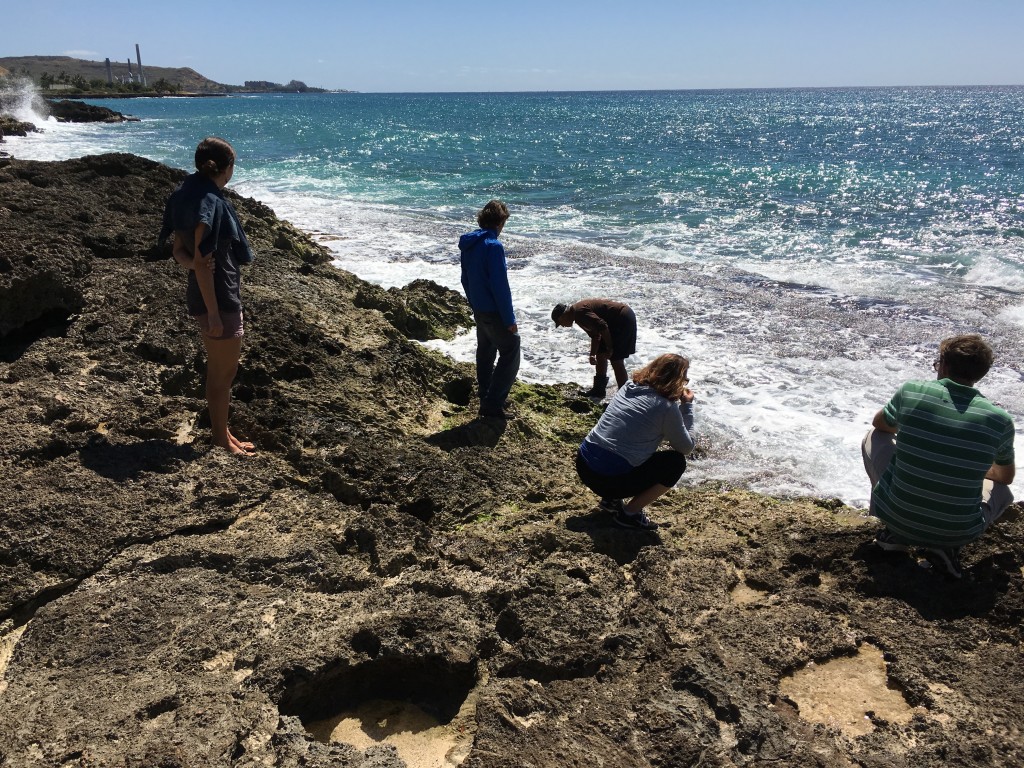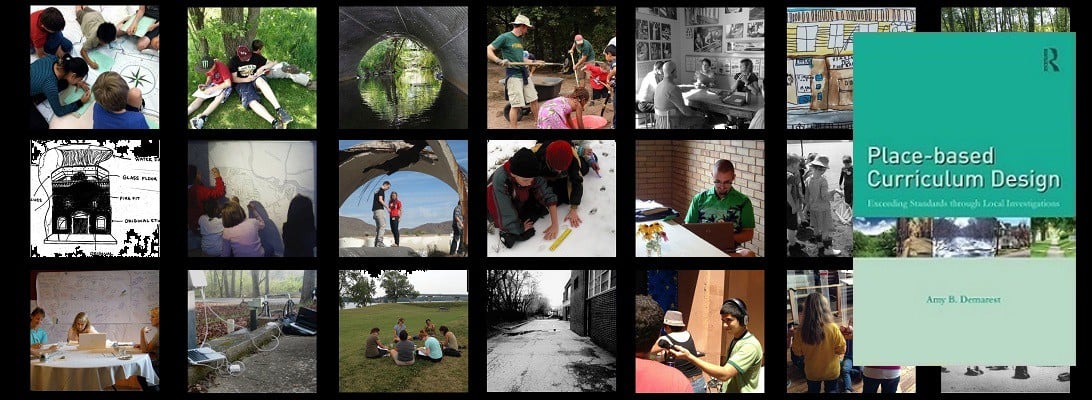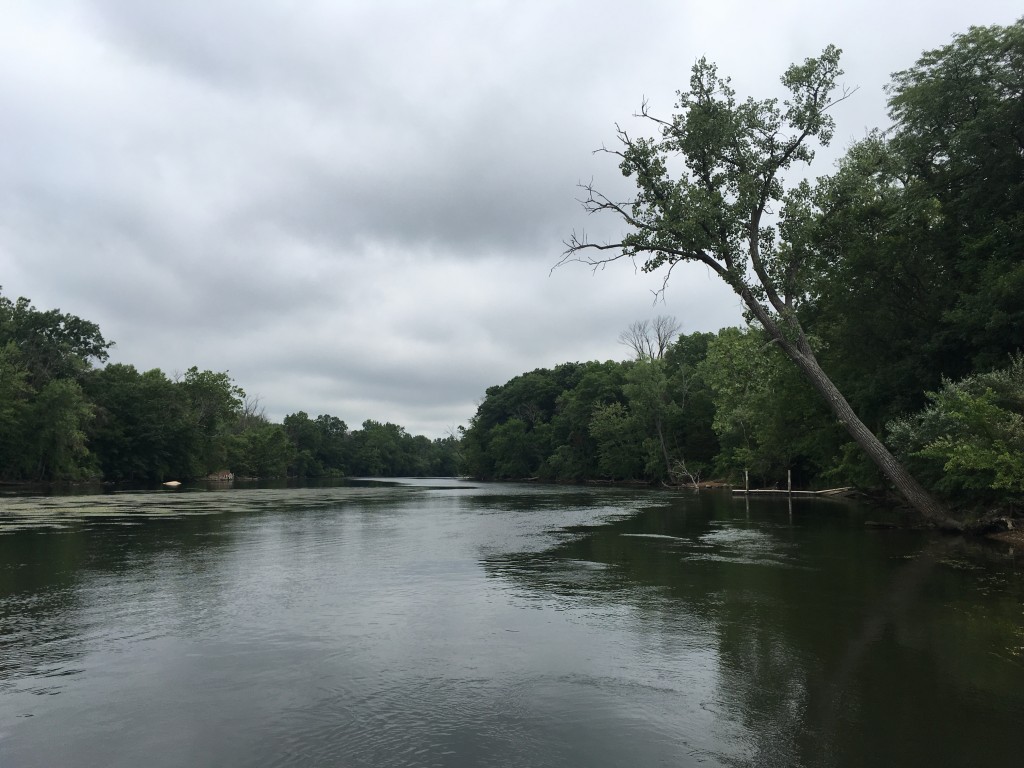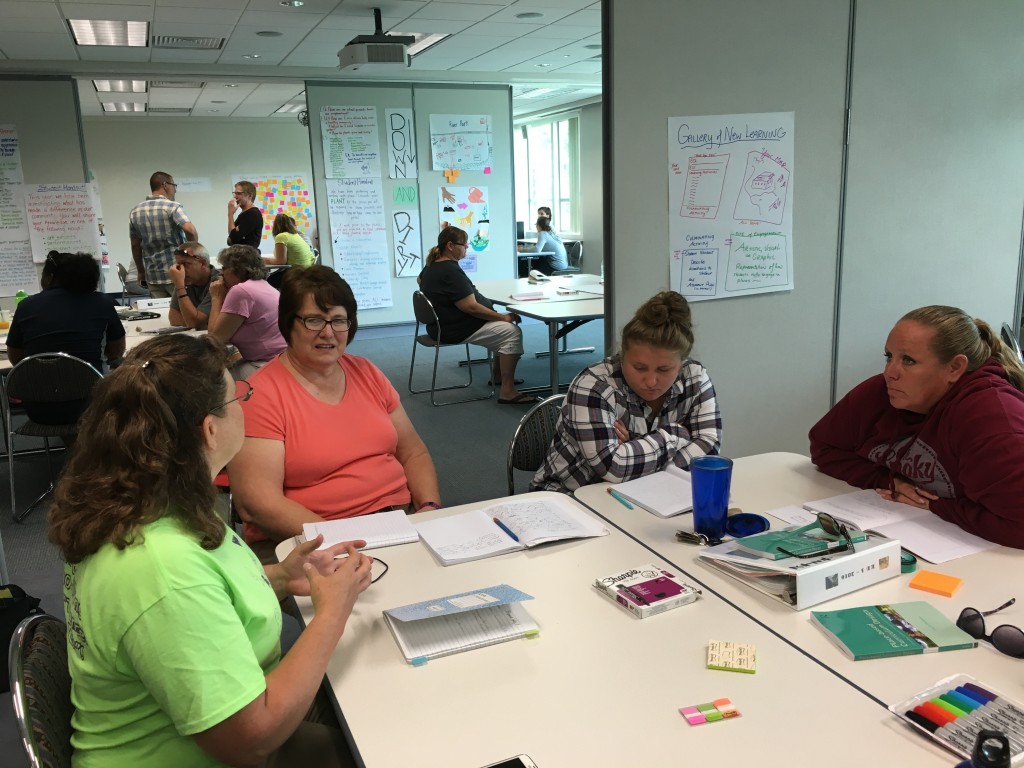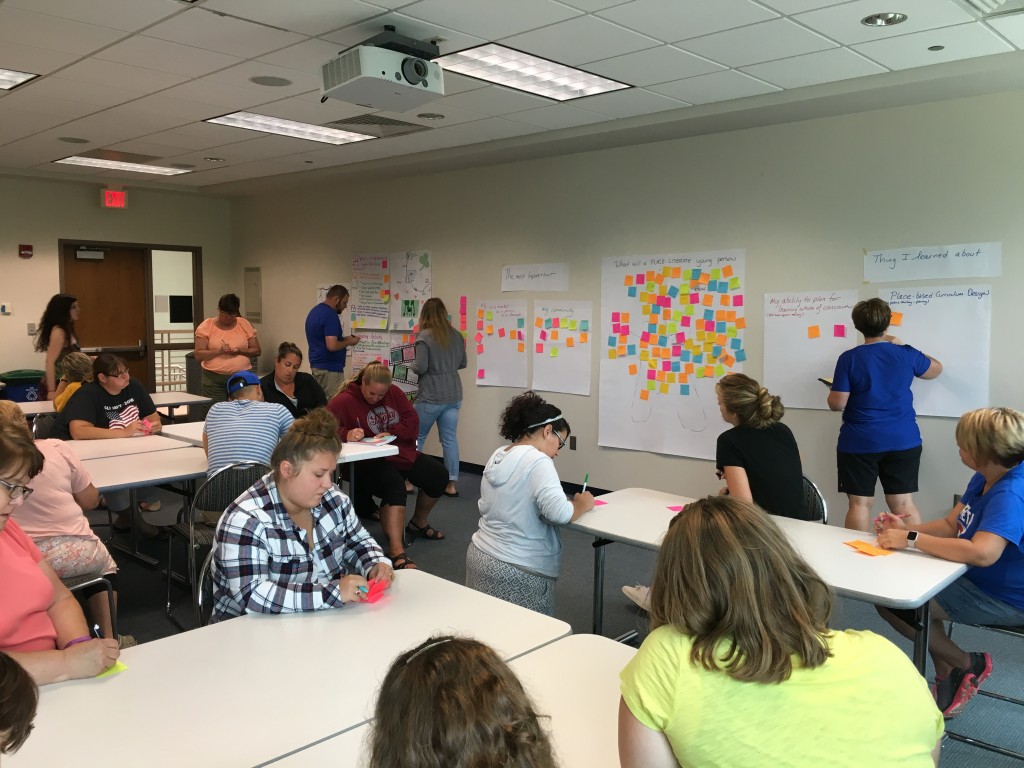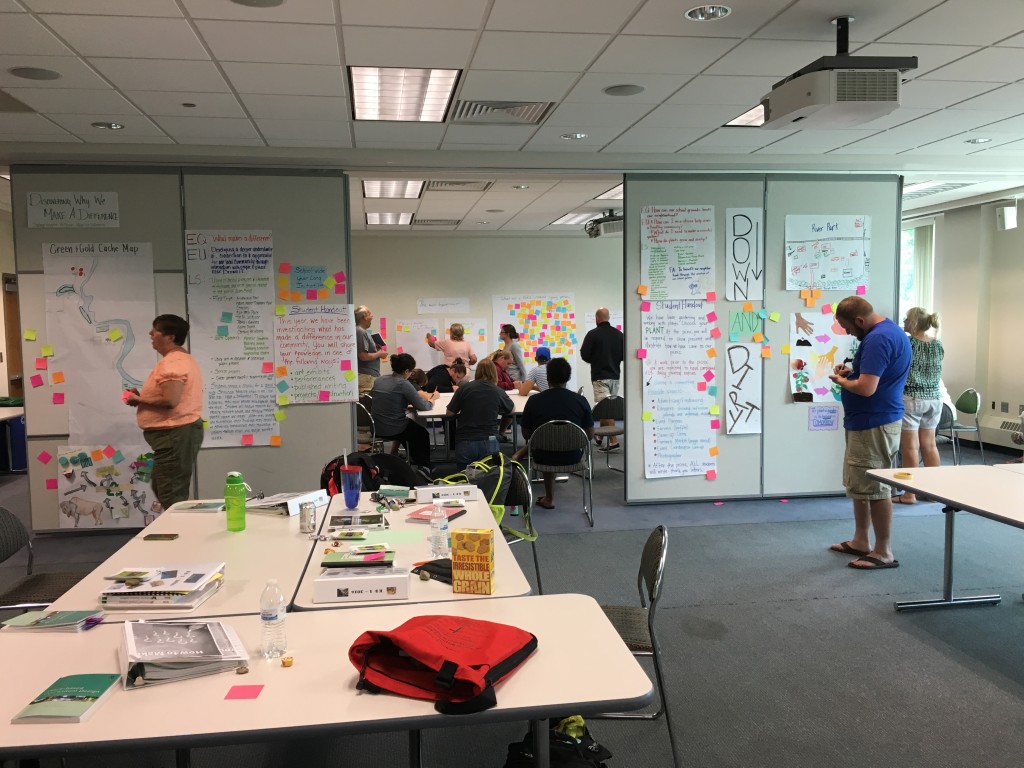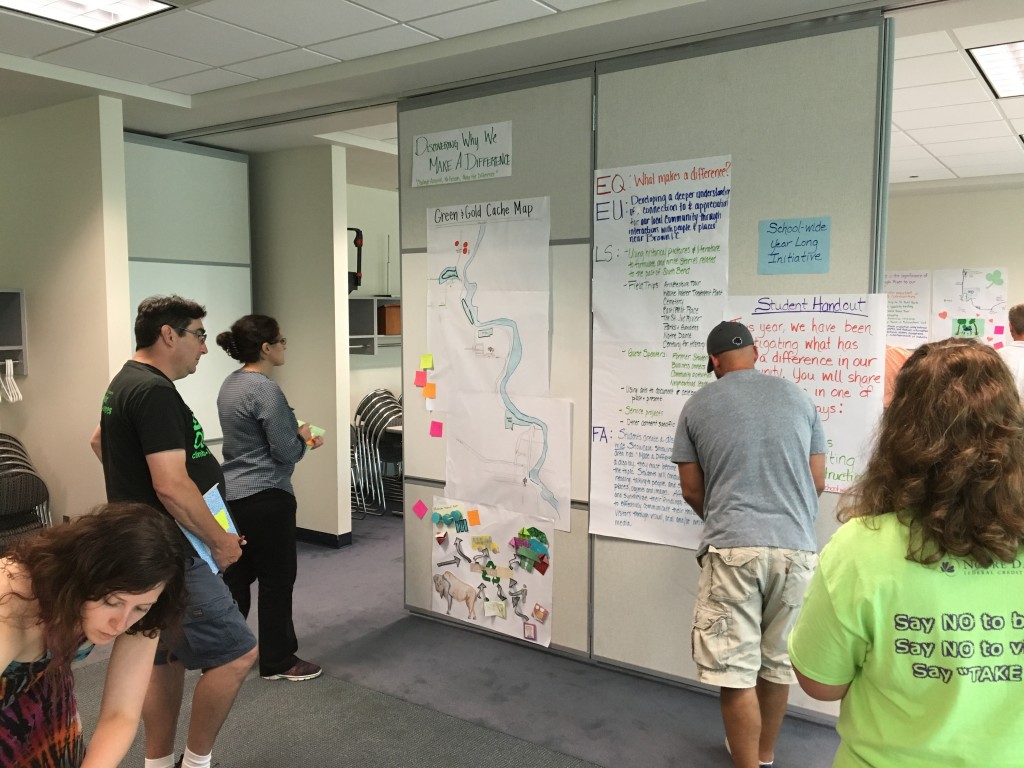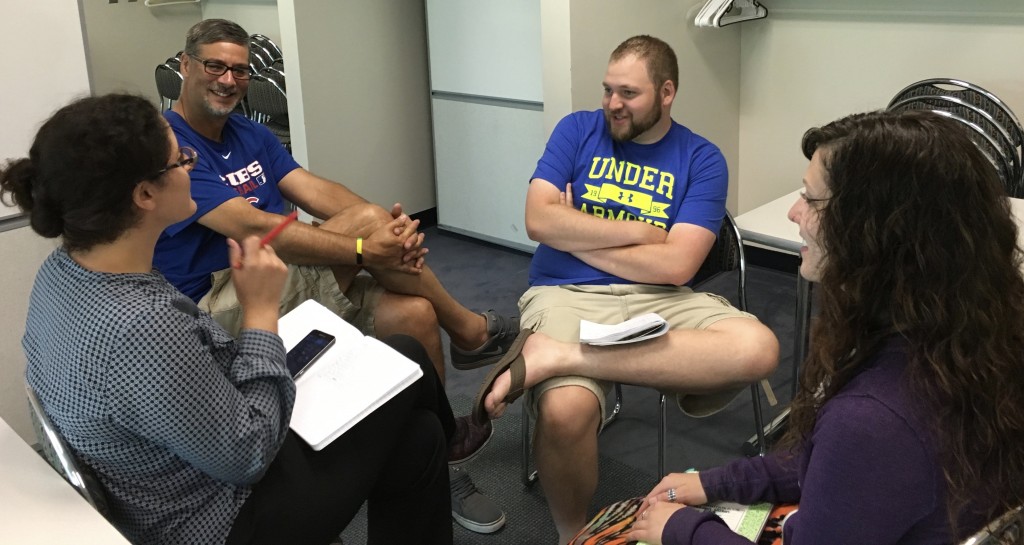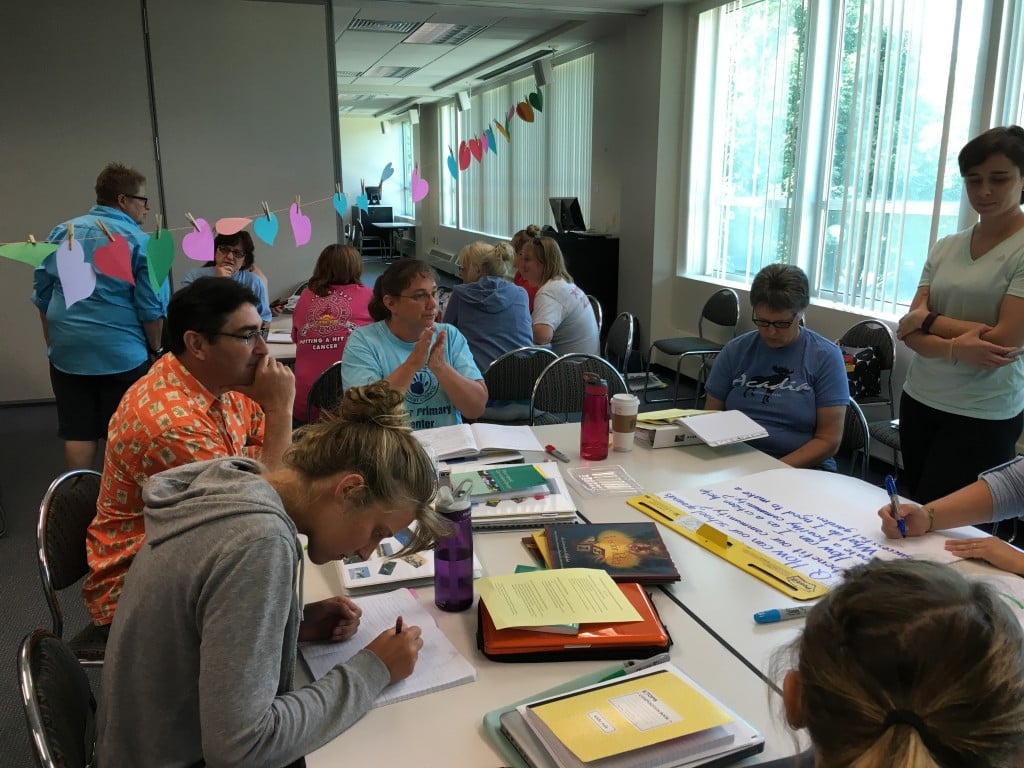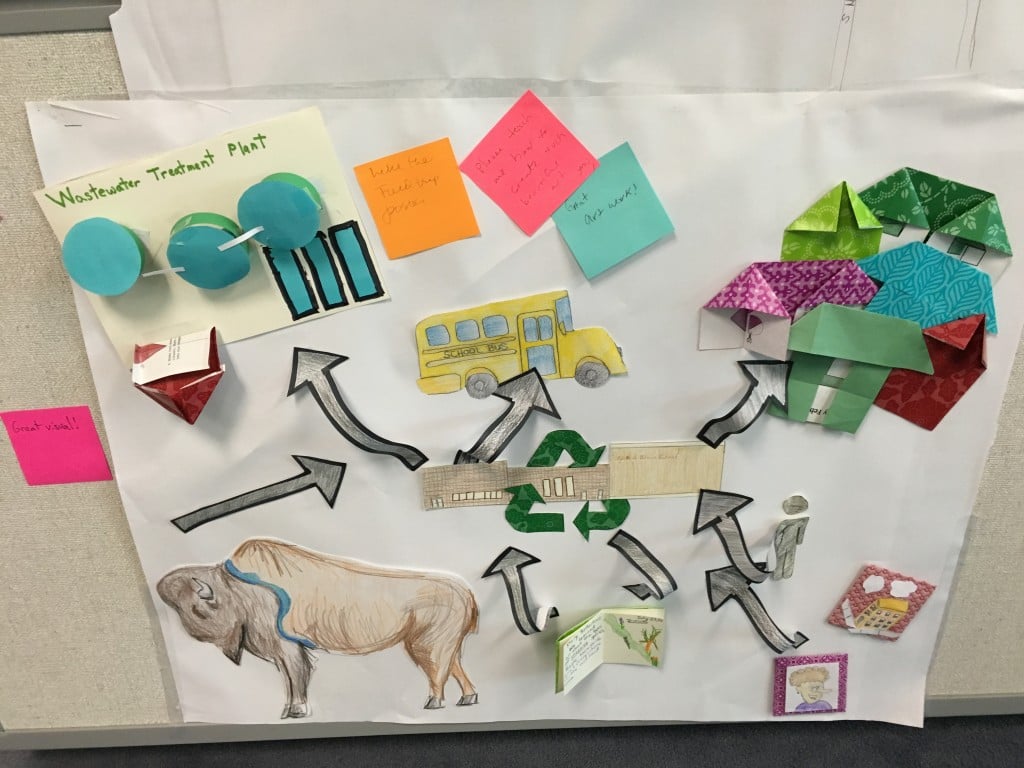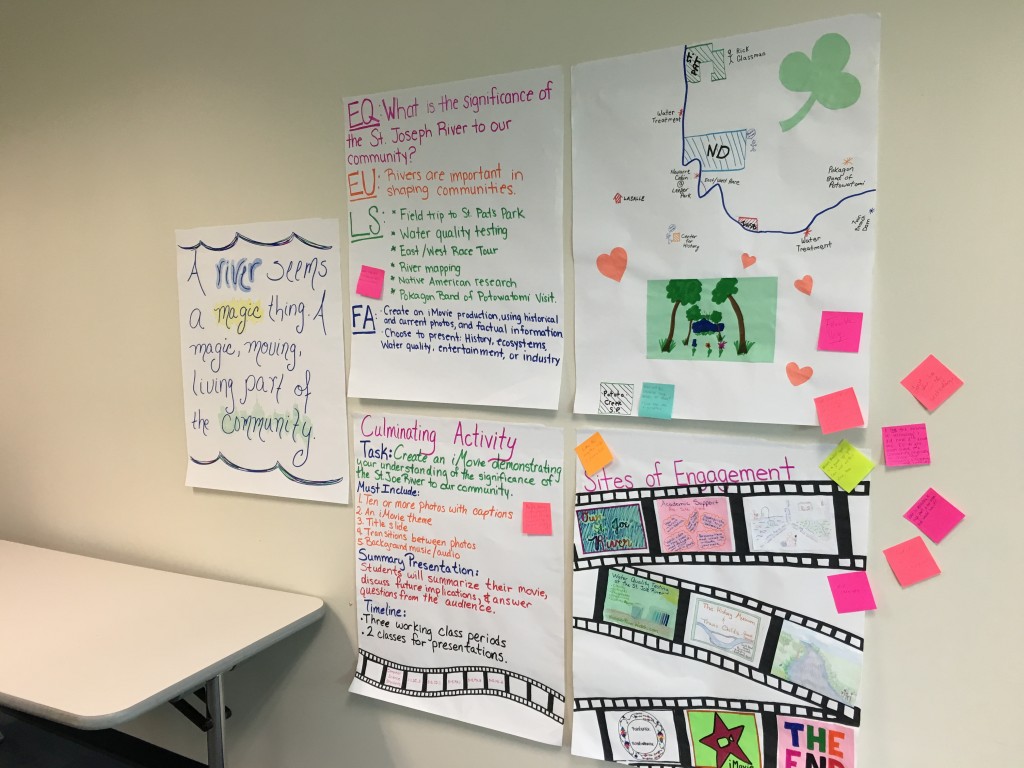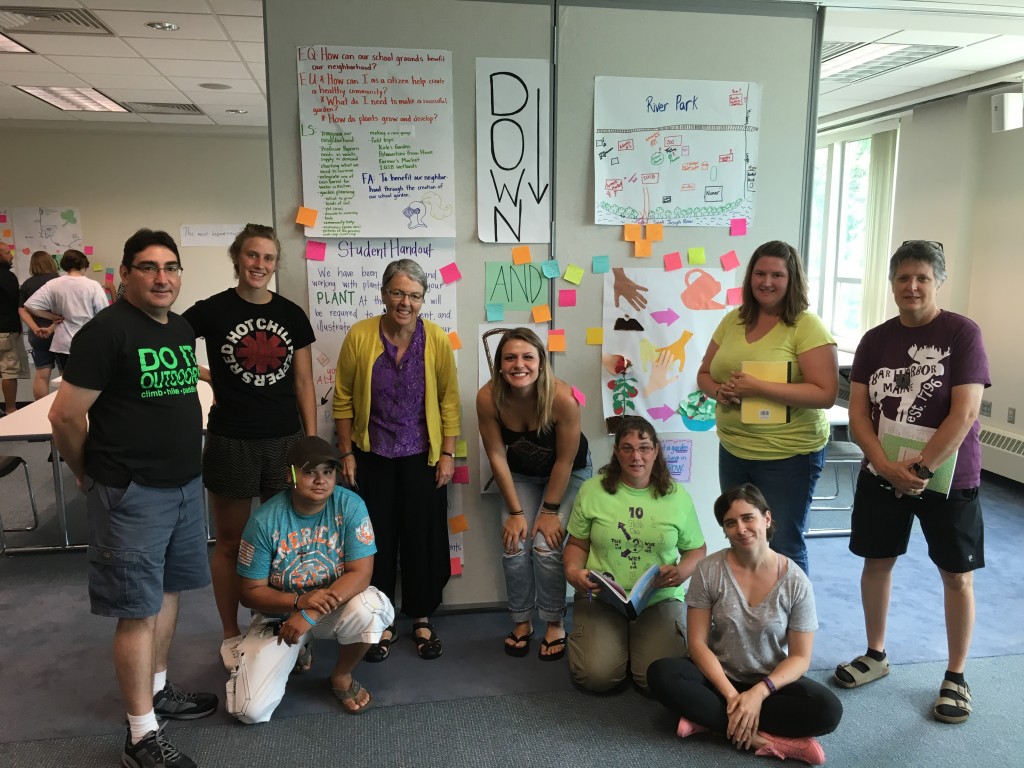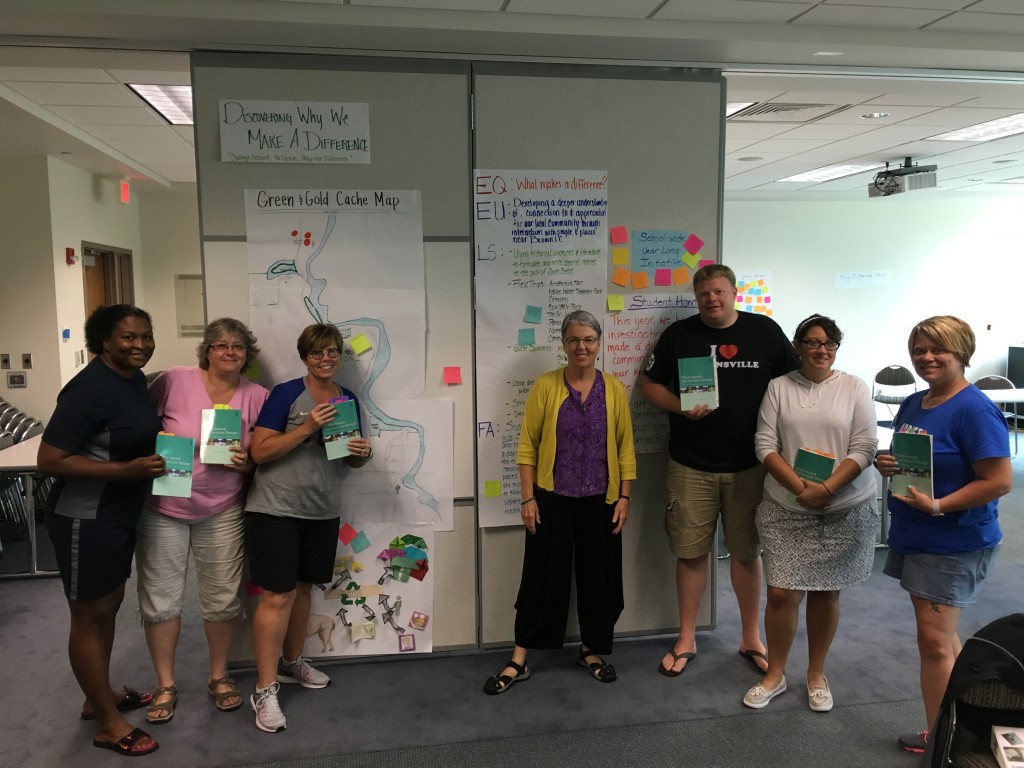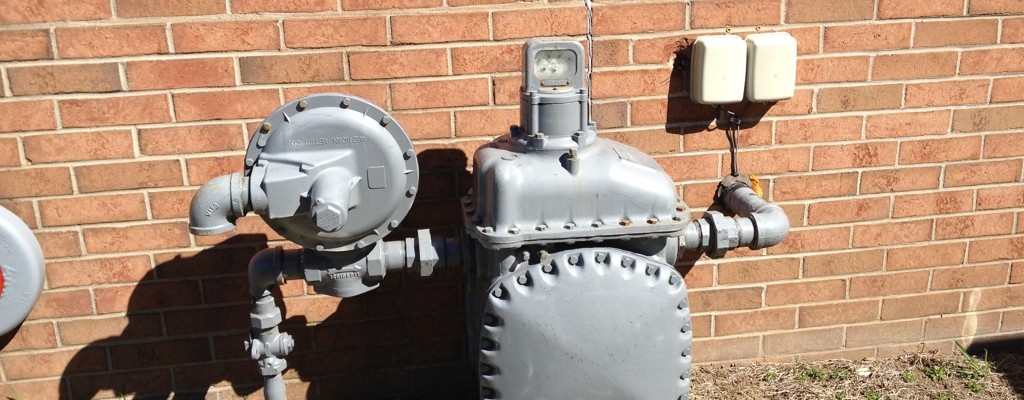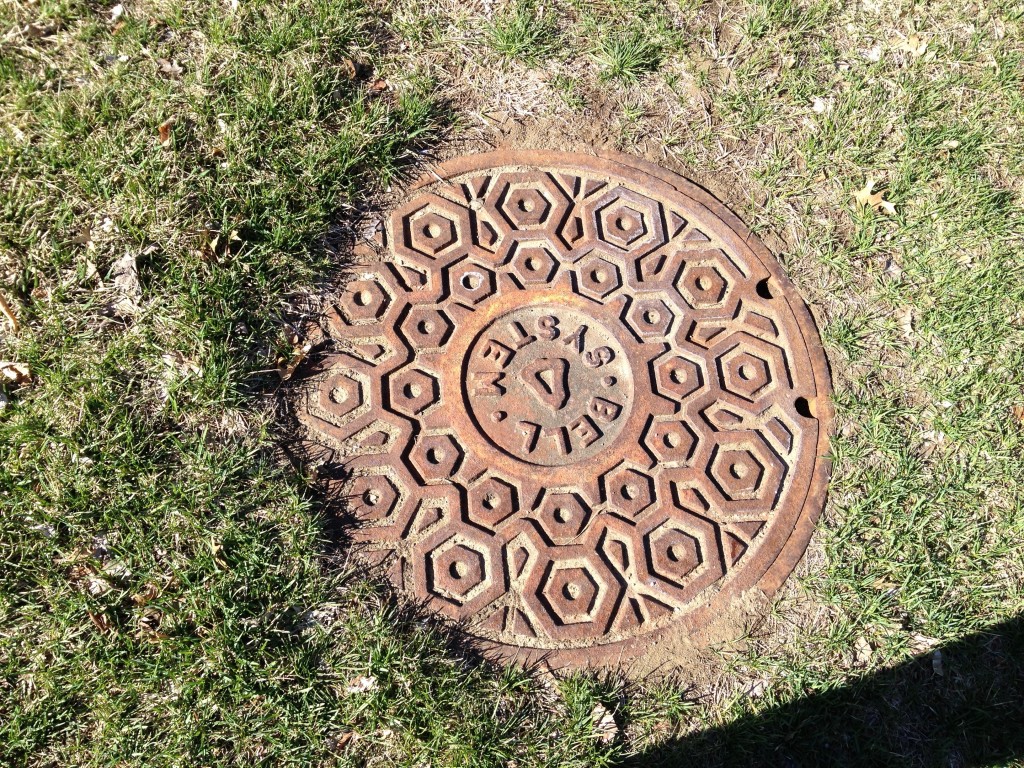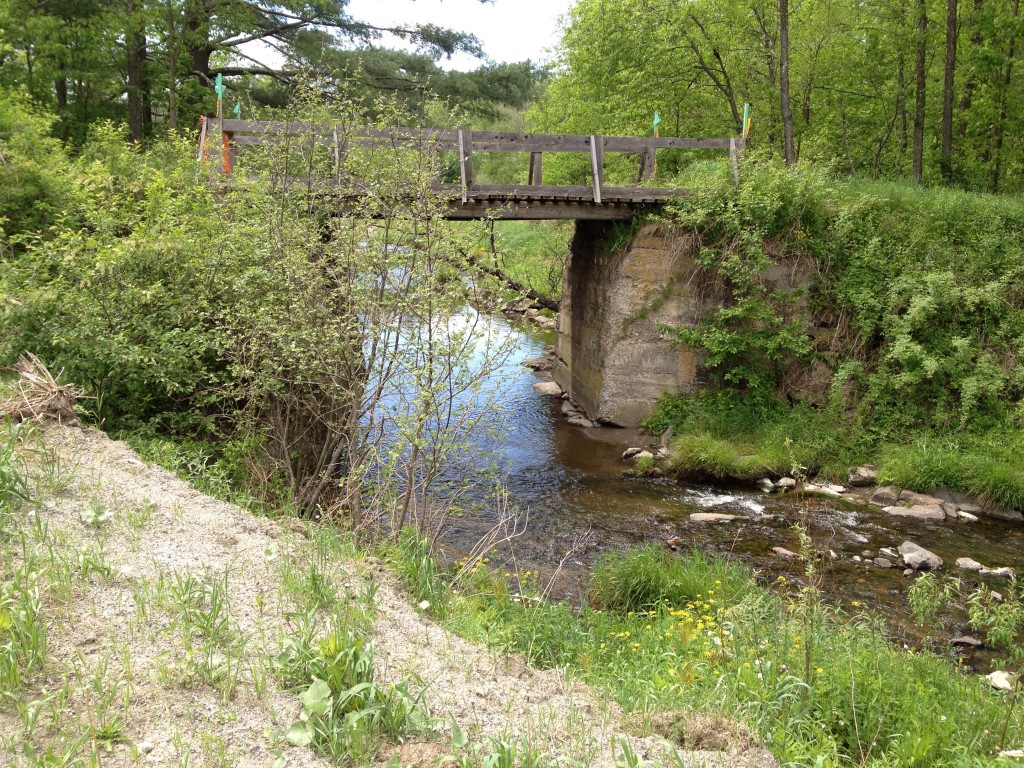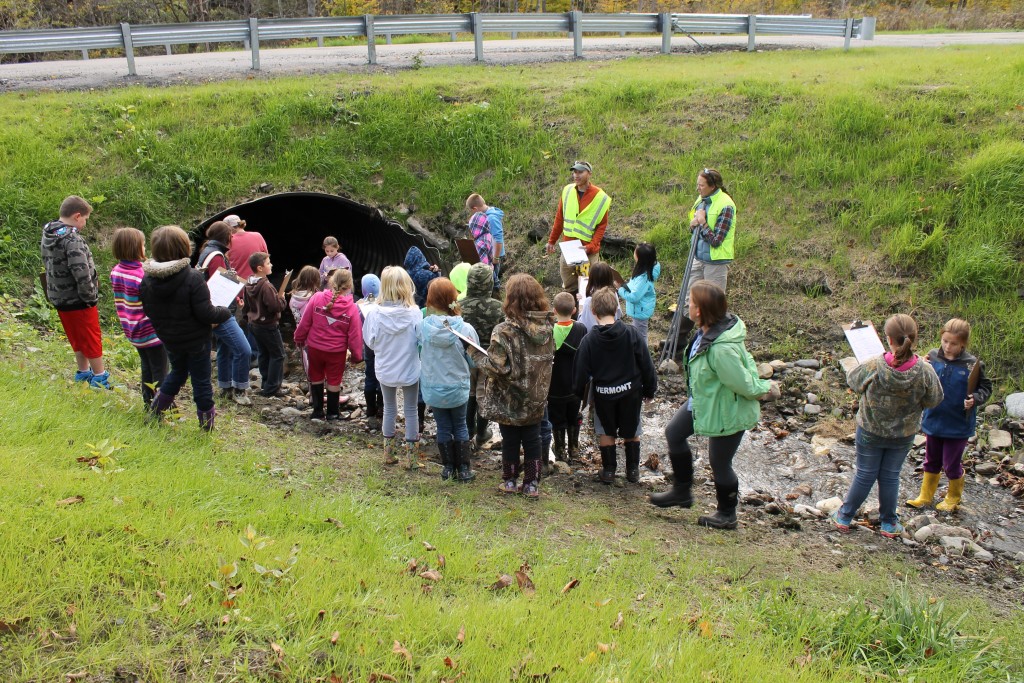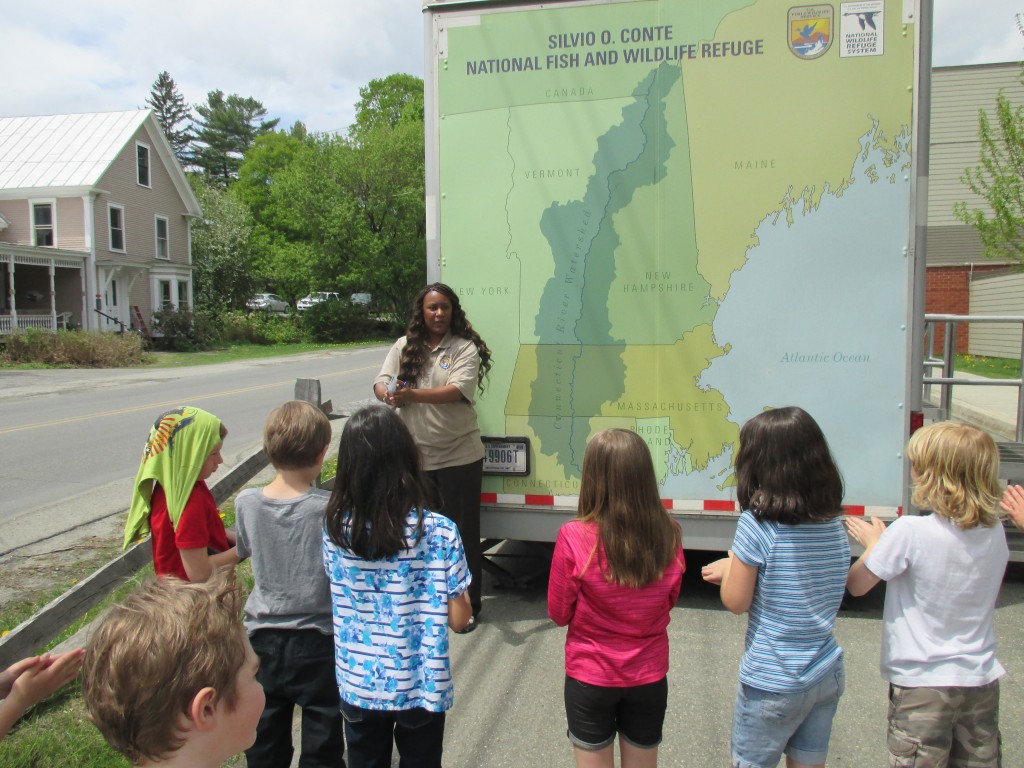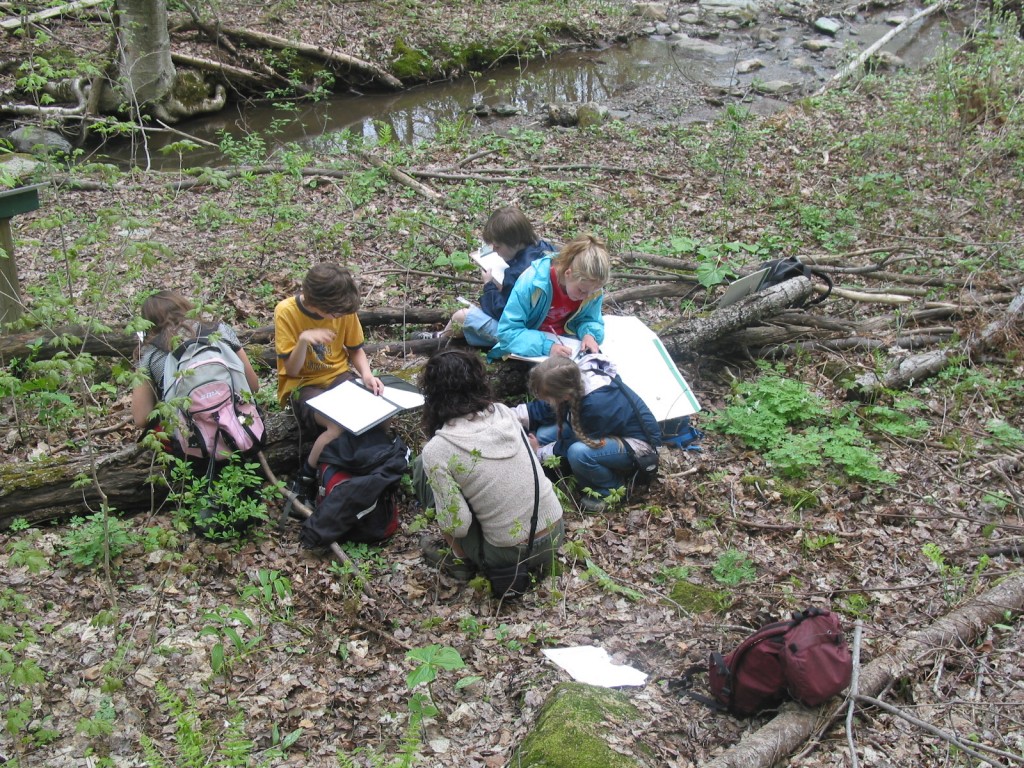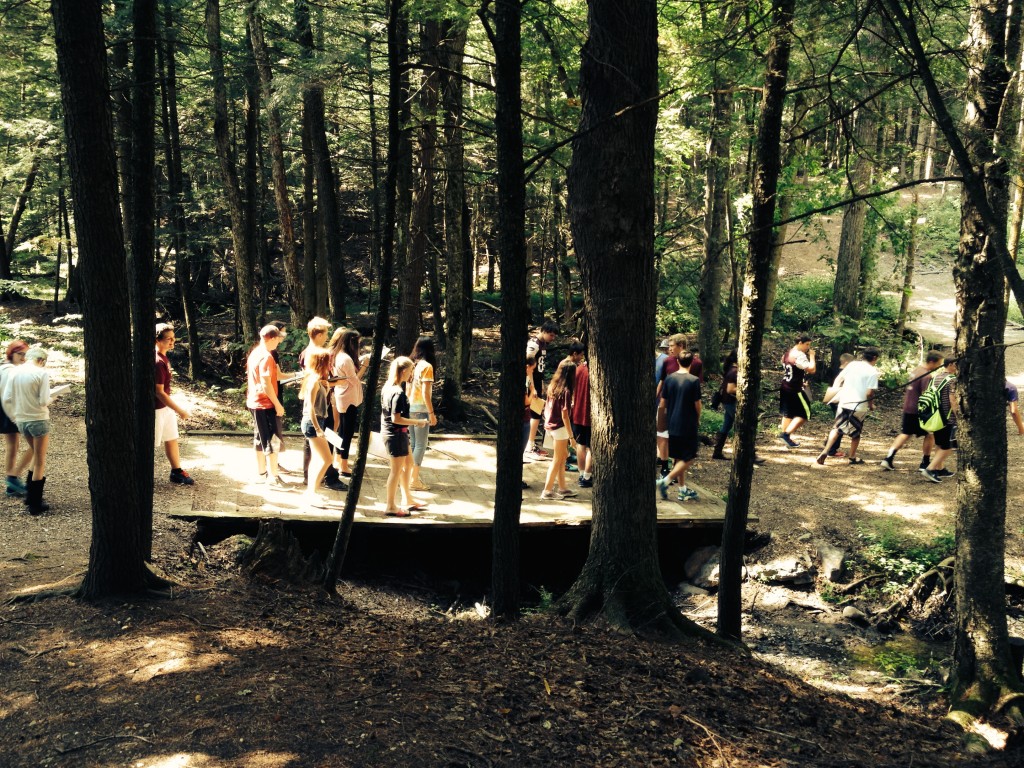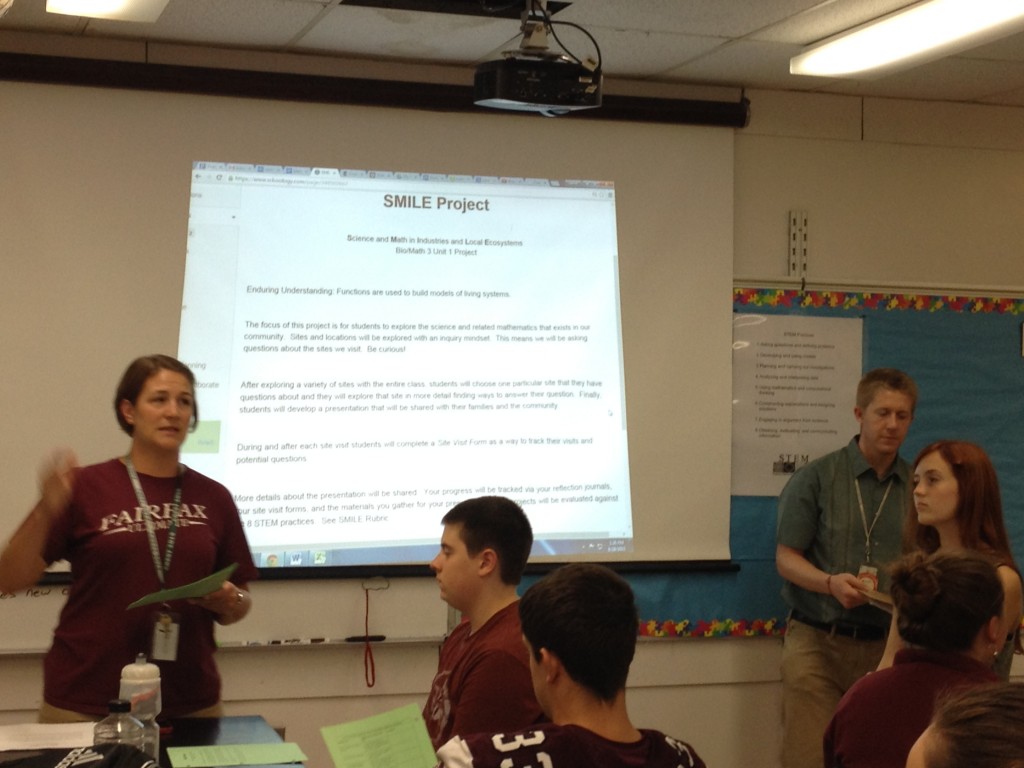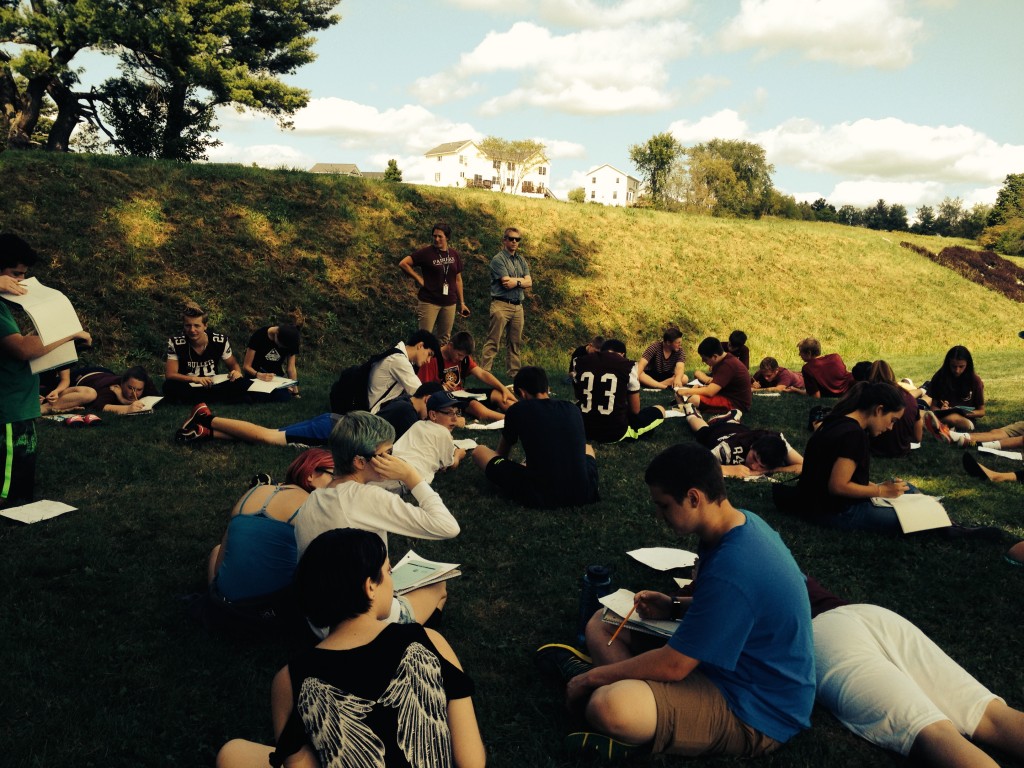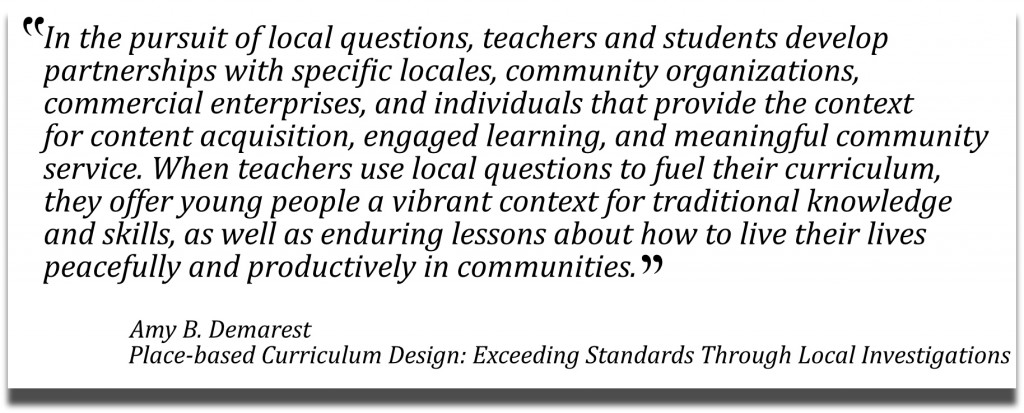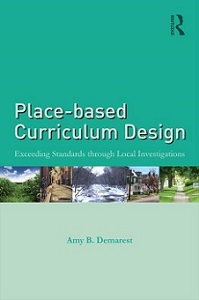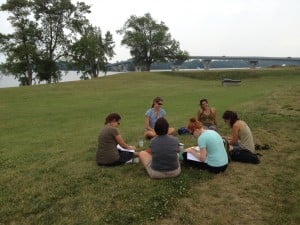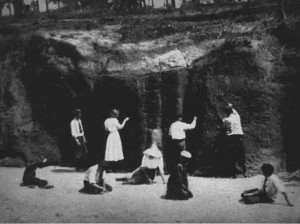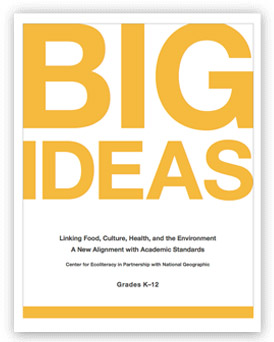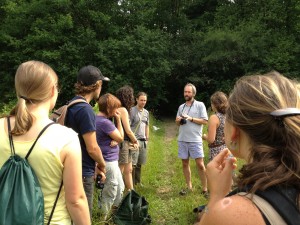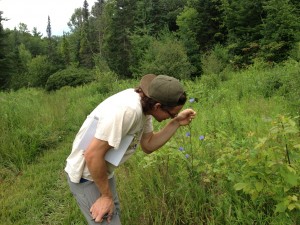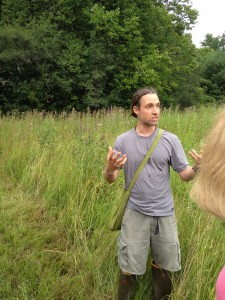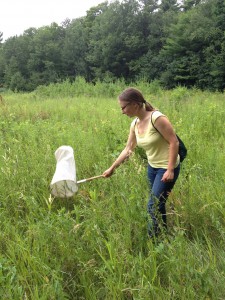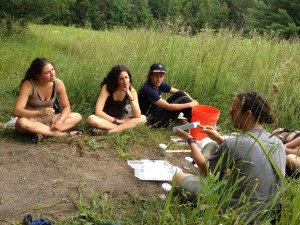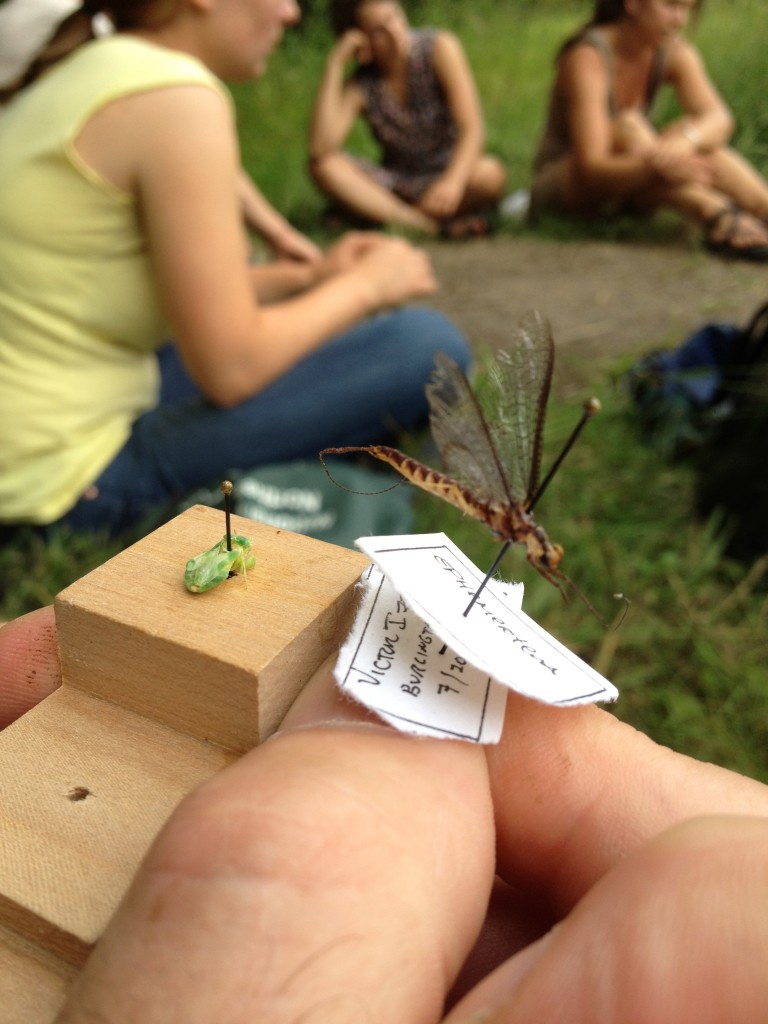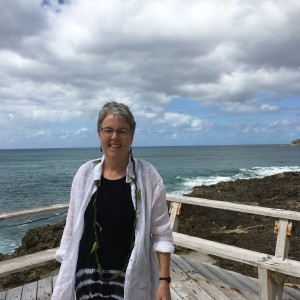 I have only been in Hawaii for a little more than two weeks, hardly a position to tell the story of this land and water from any level of expertise. But I have been deeply moved by the stories—and warmed by my time with the people here— so I am going to gather some of my thoughts in this blog to share with you.
I have only been in Hawaii for a little more than two weeks, hardly a position to tell the story of this land and water from any level of expertise. But I have been deeply moved by the stories—and warmed by my time with the people here— so I am going to gather some of my thoughts in this blog to share with you.
I am here due to an invitation from Kay Fukuda who directs a place-based education program for teachers on the Wai’anae Coast. Located on the west coast of Oahu, the coast has one of the largest native populations of anywhere in the US.
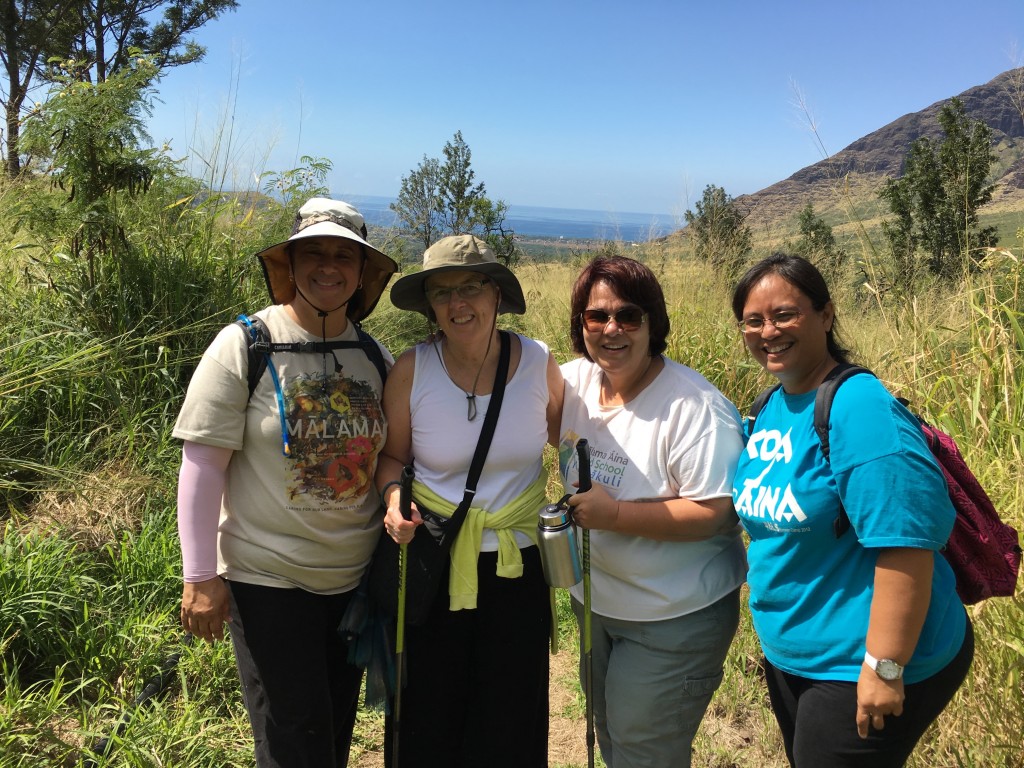
PLACES (Place-based learning and community engagement in schools!) http://www.placeshawaii.org/ is a collaborative venture funded by the Department of Education’s Native Hawaiian Education Program. Kay and a talented group of educators—most of whom have been classroom teachers — work with teachers in a variety of ways (coaching, support with field trips, program development and numerous professional development experiences) as well as coordinate a vibrant after-school program that showcases many promising practices of place-based education with self-selected teachers. It is a great model with lots of cross-fertilization between things they learn in professional development, practice in the after-school programs and contemplate (and bring to reality) in ways that strengthen their daytime classes.
The Hawaiian language is beautiful. And instructive. The phrasing and the use of some words tell much about how they view their environment. The formal use of the language was outlawed during colonial times and demeaned, ignored and marginalized throughout modern Hawaiian history. In the 1970s, in a time people here refer to as their “renaissance,” the language was brought back into the schools and the general culture. Hawaiian names are seen on most of the road signs and place names.
Educators have been in ongoing struggles to keep a commitment to the language alive in the schools and community and meet the needs of native youth. While there are many instances of state and federal support, most activists find many of the promises fall short of practice. Hawaiian language—like many other good things– took a hit with standardization/No Child Left Behind but appears to be making a comeback. While I was here there was a day-long conference I heard about on the news about helping teachers offer more effective and comprehensive language instruction.
Most notable of promoting indigenous wisdom in education is the work of Kū Kahakalau who promotes the Pedagogy of Aloha. I went to a gathering of educators and community activists (i.e. farmers and health care providers) where she presented some of the history of indigenous education and a plan for the future. A powerful presenter, she shared with us her belief that love and happiness (aloha) are important ingredients for a quality 21st century education along with academic rigor, authentic research and service to one’s community. 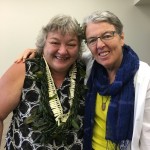 She defends the centrality of relationships – to each other and to the environment — and offers one “standard” we should hold is that students should be out of the classroom 50% of the day. She is currently working on a “anywhere, anytime digital language program” to learn Hawaiian language – http://basichawaiian.com/
She defends the centrality of relationships – to each other and to the environment — and offers one “standard” we should hold is that students should be out of the classroom 50% of the day. She is currently working on a “anywhere, anytime digital language program” to learn Hawaiian language – http://basichawaiian.com/
With the use of the language comes better understanding of how people relate to this land and water. A few phrases I heard over and over in my conversations with educators:
Mauka to makai (mountain to ocean)
Ahupua’a–All of the land is in Hawaii is organized by ahapua’a. These are traditional land divisions organized by watersheds….
Aina—land/that which nourishes
Kupuna– elders, grandparent, people of old, ancestor. It also means the source…in this way elders are viewed as the community’s treasures.
Mo’olelo—“A mo’olelo is a story, a legend, an article, and a piece of literature. More than that, mo’olelo is our history as Hawaiian people. Within each mo’olelo, stories of how our ancestors lived, how they worked, how they leisured, how they fought, how they loved, are told. It provides those of us living today with some insight as to how our ancestors lived. Mo’olelo provides the link between those of us living today to our ancestors who have come before us and because of all this; a mo’olelo is more than just a story or a legend. http://ksdl2.ksbe.edu/loi/moolelo.html
You can see how many of these words carry with them lessons—they seem to have numerous meanings and can serve as nouns, adjectives and verbs given any different context.
On my first day of exploration we went mauka to makai with our group of teachers. 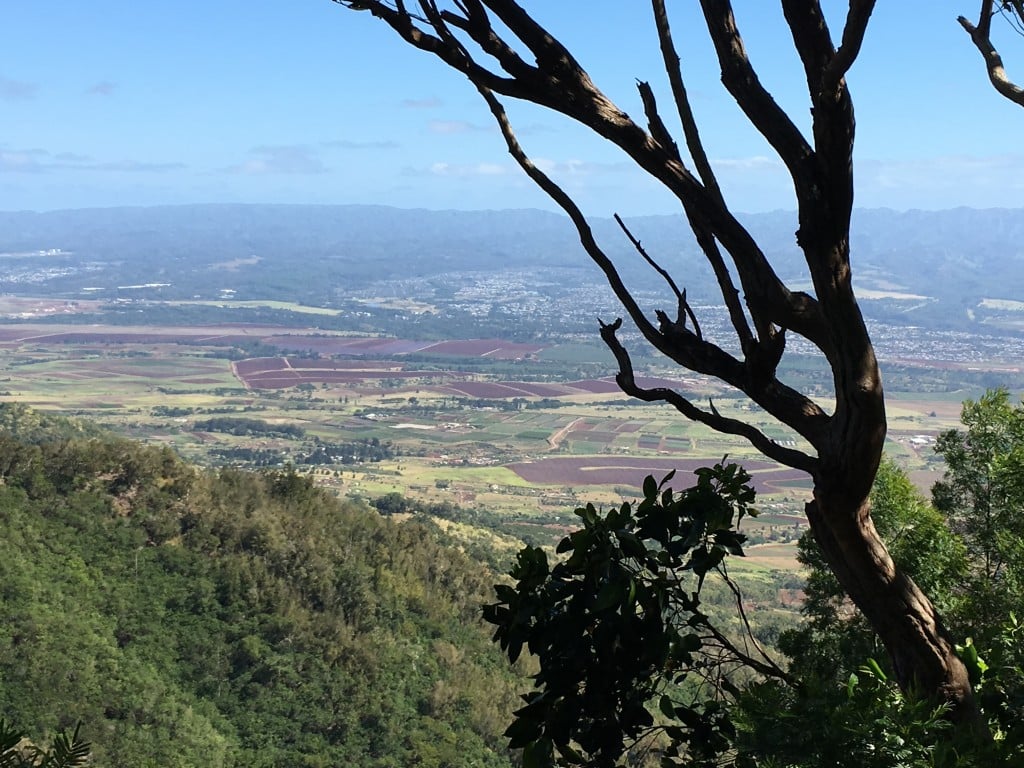 On our way up to the top of the mountain we stopped with Thomas Anuheali`i, the ranger of the Palehua Forest Reserve (who I met as Anu) who led us around what they say may be the largest undocumented settlement of ancient peoples in Hawaii.
On our way up to the top of the mountain we stopped with Thomas Anuheali`i, the ranger of the Palehua Forest Reserve (who I met as Anu) who led us around what they say may be the largest undocumented settlement of ancient peoples in Hawaii.
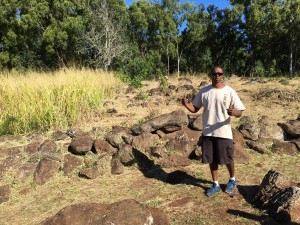
He showed us rock patterns that indicated links to Polynesian ancestory, how the outline recreated a compass and clues to how this place may have been lived in.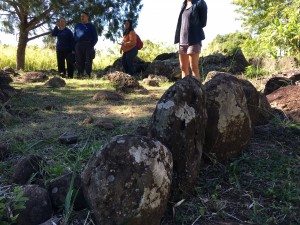
When we arrived at the site, my colleagues sang a chant of greeting. This was the first time I heard this—but it was repeated numerous times throughout my visit when we arrived and departed from different places (I included a clip of it from Ka’ ala). I learned that they were greeting the place and saying where they were from. To stand looking out from the mountain to the sea (mauka to makai) while they chanted was a spectacular moment. It seemed sacred so I didn’t record it the first time-but I was invited to share it if i wanted to.
The next day we went with PALS staff and some other teachers to Ka’ala Farms where Eric Enos and his colleagues have restored an ancient stream that had been diverted years ago to grow sugar cane. Called a learning center….it is a place where youth can come and take part in the care of taro plants as well as practice and experience the power and the peace of some of the old ways.
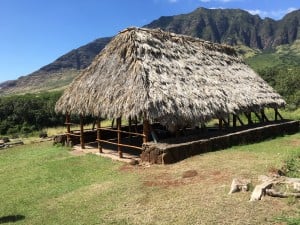
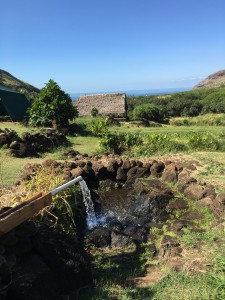
When they worked to uncover the stream they found stone remnants of ancient terracing to grow taro (or kalo as the Hawaiians call it). Many of these have been uncovered – and some are in active use growing taro.
We hiked up the mountain. So did Fred!

The stream that ran from the base of the mountains was amazing. It must have been a 30-degree change in temperature—and a window into what a place on earth that is cared for might feel like. While we were there Eric told us more about the lessons we might learn from the waters. He constantly emphasizes knowledge about how things work from “mauka to makai” not just book knowledge.
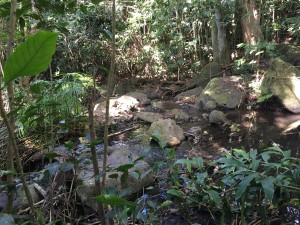
Eric sees the restoration of this one ahupua’a as central to his work in helping his community – and all of us—face the 21st century. Not only are the lessons in the land—but in its vitality rests our future.
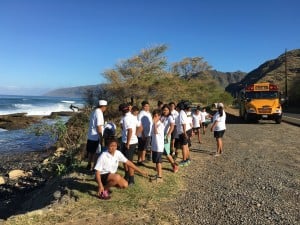
On my third full day of exploration I joined a 6th grade field trip from Ka waihona o ka na’auao School. The teachers had prepared two sites to visit. I went first with the group that went to a rock beach up the coast where students were going to find pohaku (stones) to make rocks for a traditional game of ulu maika. This was a game played traditionally in resting time (makahiki) a time that corresponded to the harvest and the weather—when people would take a break from regular work to relax and restore. No fighting or warfare was permitted during makahiki.
The students were greeted by Vince Dodge —a community member and artist who advised the students about how to choose their pohaku stones as well as a proper stone to do the carving.
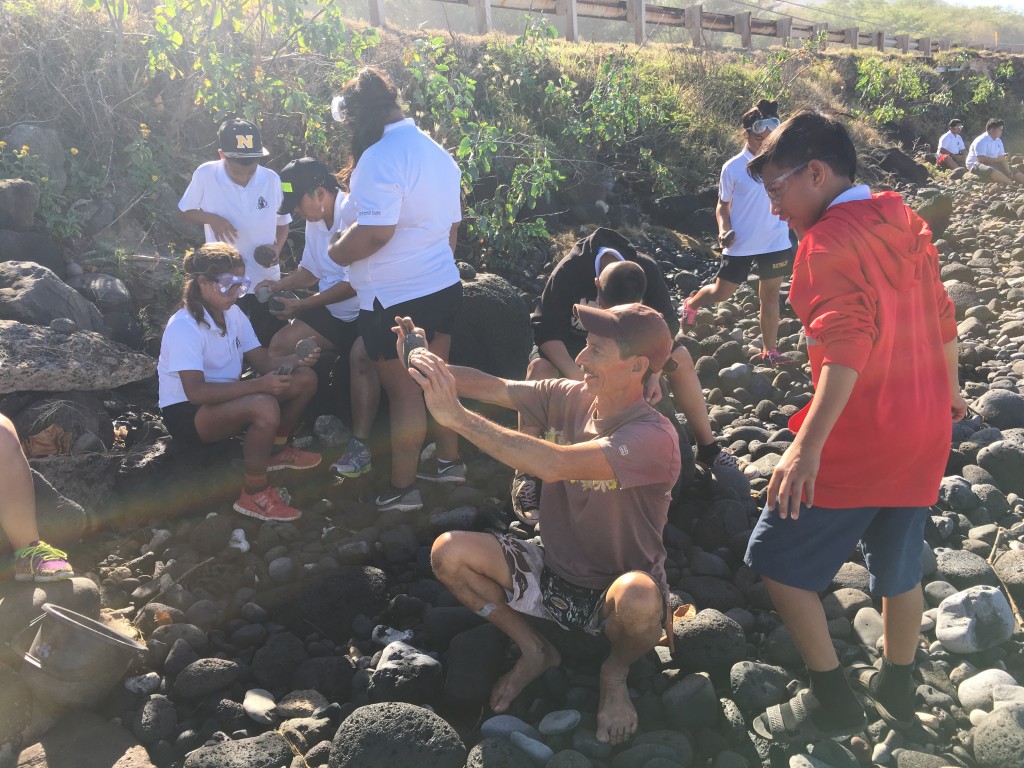
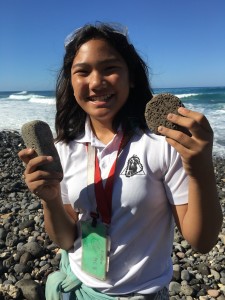
The students were clearly prepared on the task but Vince offered a good reminder of what they needed to remember – as well as protocol for safety. Soon the lovely noise of the waves on the rocks was joined by the tap-tap-tap of their carving. It was one of those quintessential moments we place- based educators get every now and then. Being outside with a group of students who were happily occupied in a worthwhile endeavor. The teachers on-site were no longer directing. The relationship was between the student and the stone.
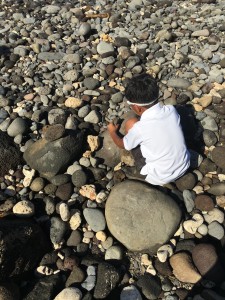
Every now and then they would come to Vince for advice and there would be a little conference.
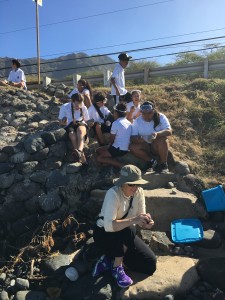
Before we left the students gathered to chant their thanks to the place.
A few students were able to try out how well their stones rolled before they got on the bus!
Then the teachers switched busses and the other group searched for stones and we went to a cave. This was a change in plans since the road going further north up the coast had washed out due to unusually high waves. One more sign of these good teachers coming up with an awesome PLAN B on the spur of the moment. We again met Eric Enos who was joined by “Auntie Stella” who had a ukulele and led the students in a few songs on the bus!
Upon arrival—the students gave greeting to the cave.
Chant–having a few technical difficulties–I will try to post soon!
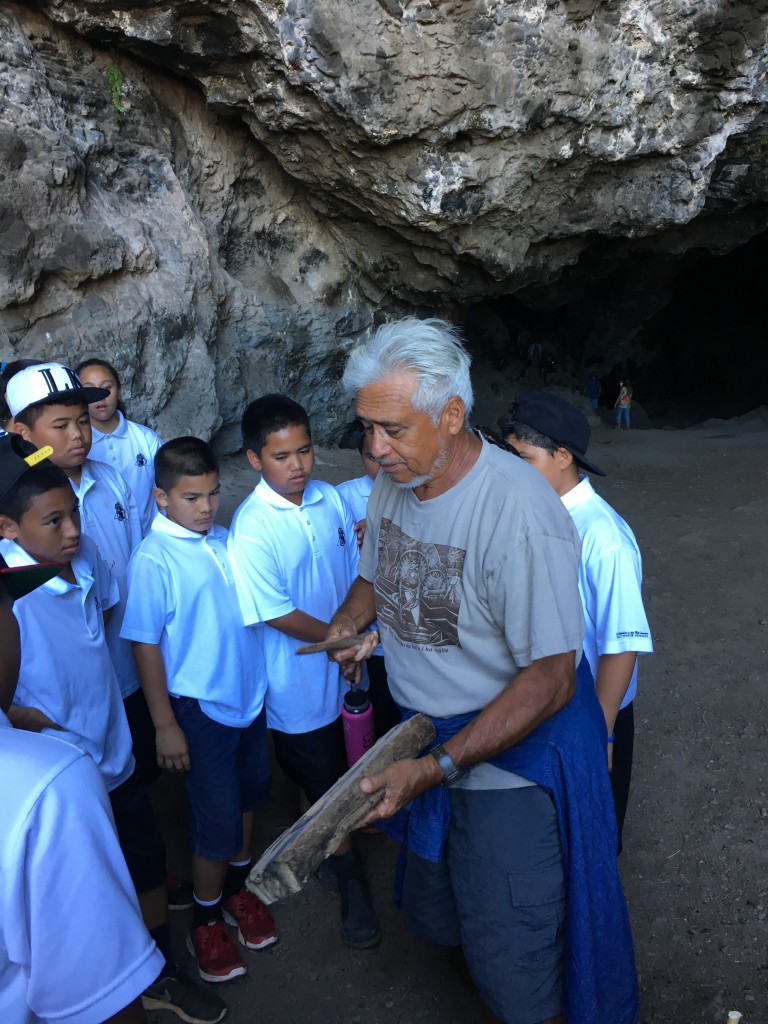
Eric told stories in the cave and the bus toured some different sites along the coast and through a neighborhood where you could see the land made from coral and another place where you were clearly inside the remains of a crater (caldera).
One afternoon we visited a number of different PALS programs. Among them: media/video production, robotics, Random Acts of Aloha, farming, gaming, traditional arts….many more. Here one teacher shares some student work with me. This science fair project had a requirement of just one local connection.
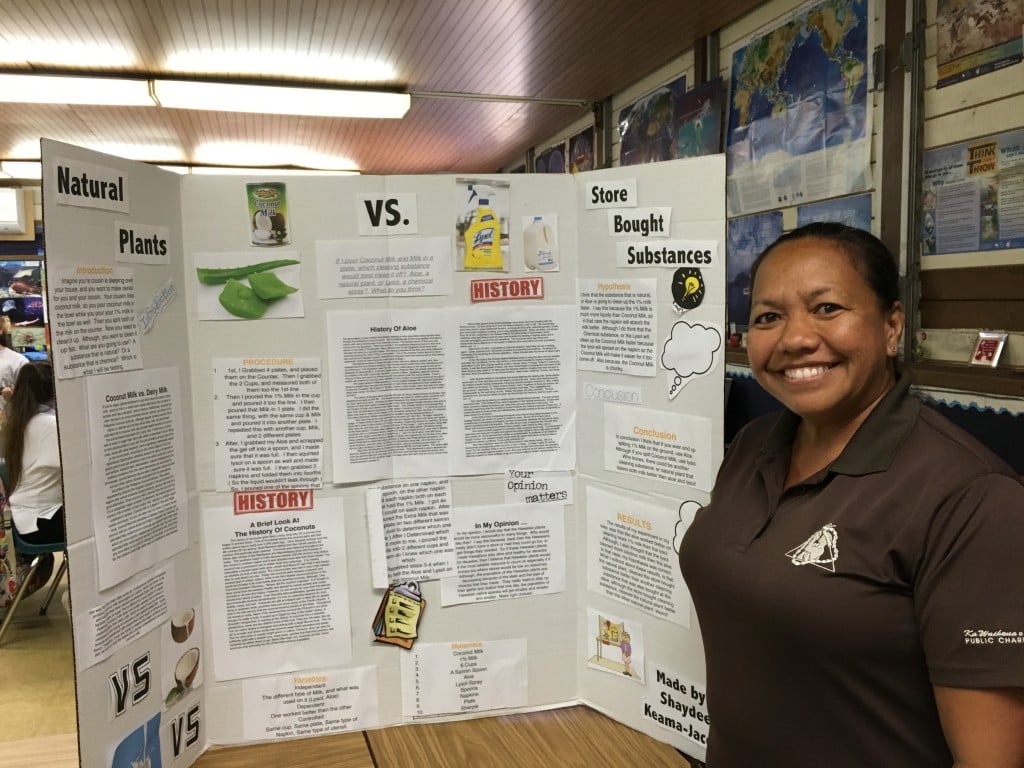
In a Nanakuli English class I visited while Hawaii’s first poet laureate (http://www.kealohapoetry.com/) was performing and teaching some uplifting slam poetry with a high-school class. (not an after-school program).
 One afternoon after school I met with (most) of the PALS teachers. They were the ones who had read my book on place-based curriculum design http://www.amazon.com/Place-based-Curriculum-Design-Exceeding-Investigations/dp/1138013463 and participated in a Google discussion group about the book. That was a first for me—meeting so many people with whom we had already had a discussion! I shared back with them some of their comments from the Google group and they got in small groups to discuss what these “findings” suggested about possible future directions.
One afternoon after school I met with (most) of the PALS teachers. They were the ones who had read my book on place-based curriculum design http://www.amazon.com/Place-based-Curriculum-Design-Exceeding-Investigations/dp/1138013463 and participated in a Google discussion group about the book. That was a first for me—meeting so many people with whom we had already had a discussion! I shared back with them some of their comments from the Google group and they got in small groups to discuss what these “findings” suggested about possible future directions.
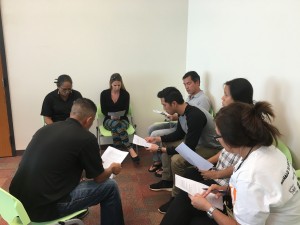
There is much happening here. I got to participate in some amazingly rich learning experiences. It often wasn’t clear what I was bringing to the discussion—but I certainly did learn a lot. Thank you PALS for your friendship and collegiality and for sharing this wonderful PLACE with me!
Photo from our last meeting/minus Loke:
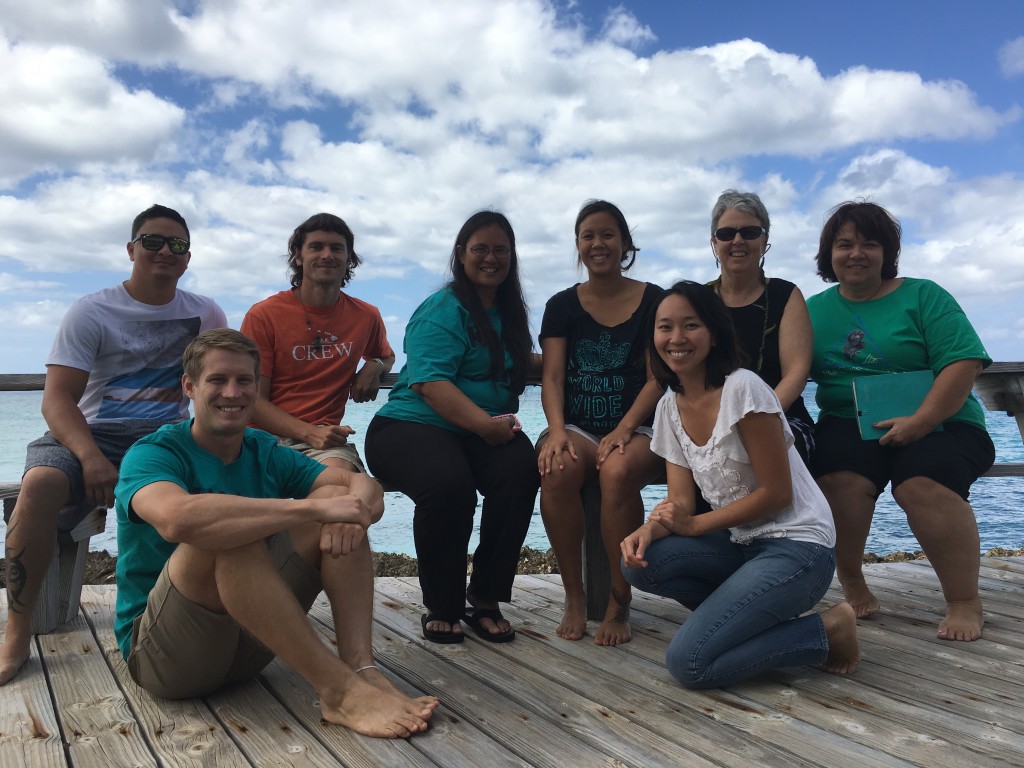
During my visit there were many times when I was able to recognize common elements of place-based education. In teachers’ dilemmas, in the happiness of engaging students, in the joy of discovering secrets of the place you called home. But in many ways my journey on the Wai’anae Coast was to someplace magically different and much more powerful than another “educational consultancy.” While the people of Hawaii deal with the multitude of problems facing our globe in the 21st century from an immensely vulnerable spot of being small islands with huge climate, transportation, environmental issues, they also hold some of the most powerful tools of resilience and ancient wisdom and ways of being on the land and water that can replenish, restore and guide our future. These lessons provide much wisdom for all of us in education.
I am immensely grateful for being able to take part in this energy. It has been a journey of hope. Mahalo!
